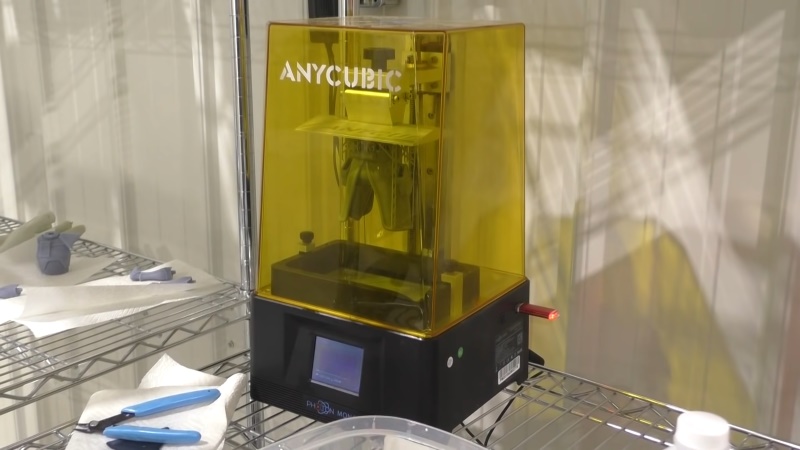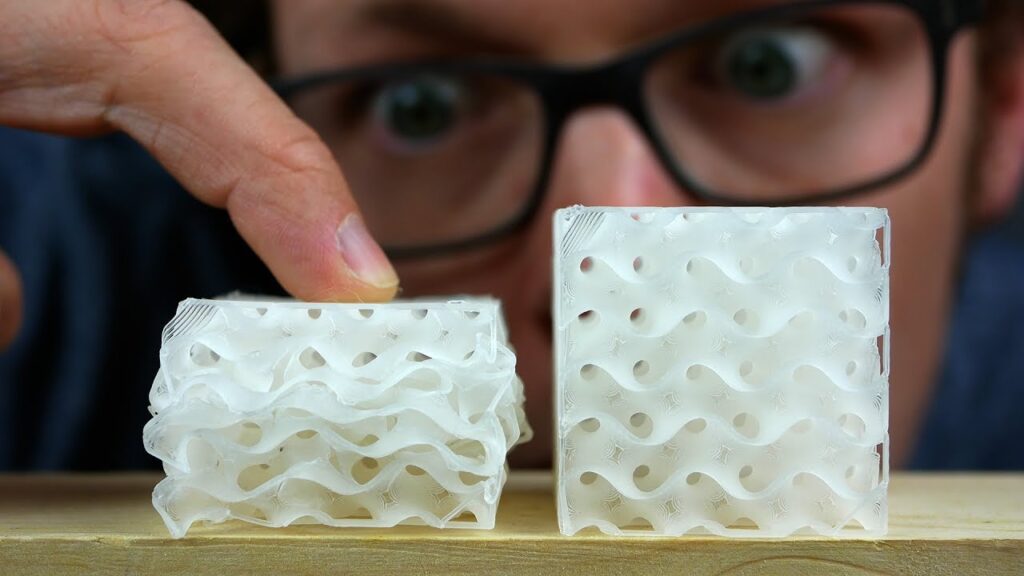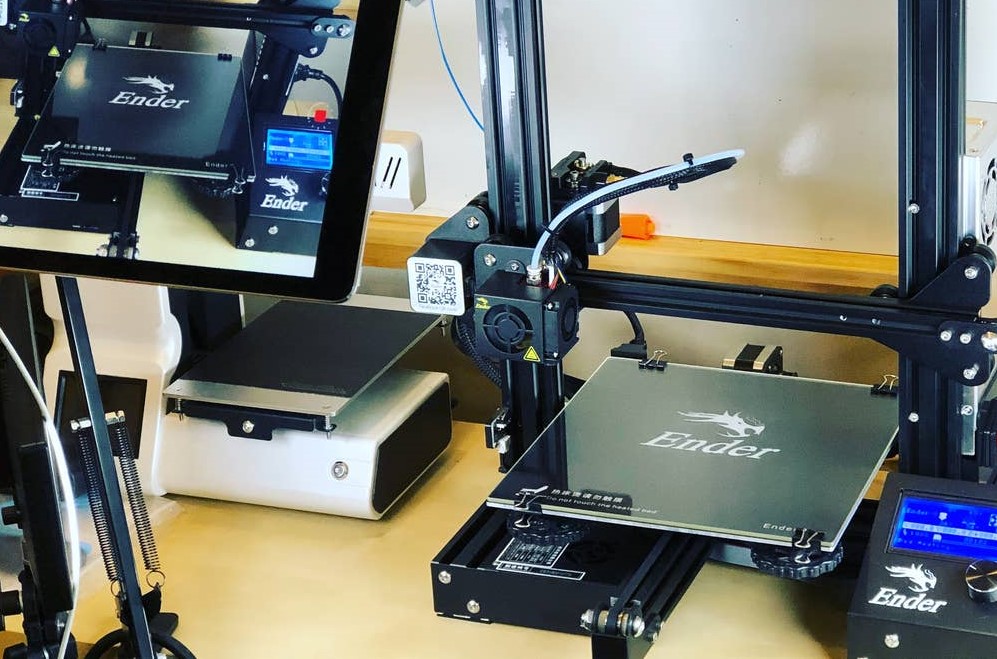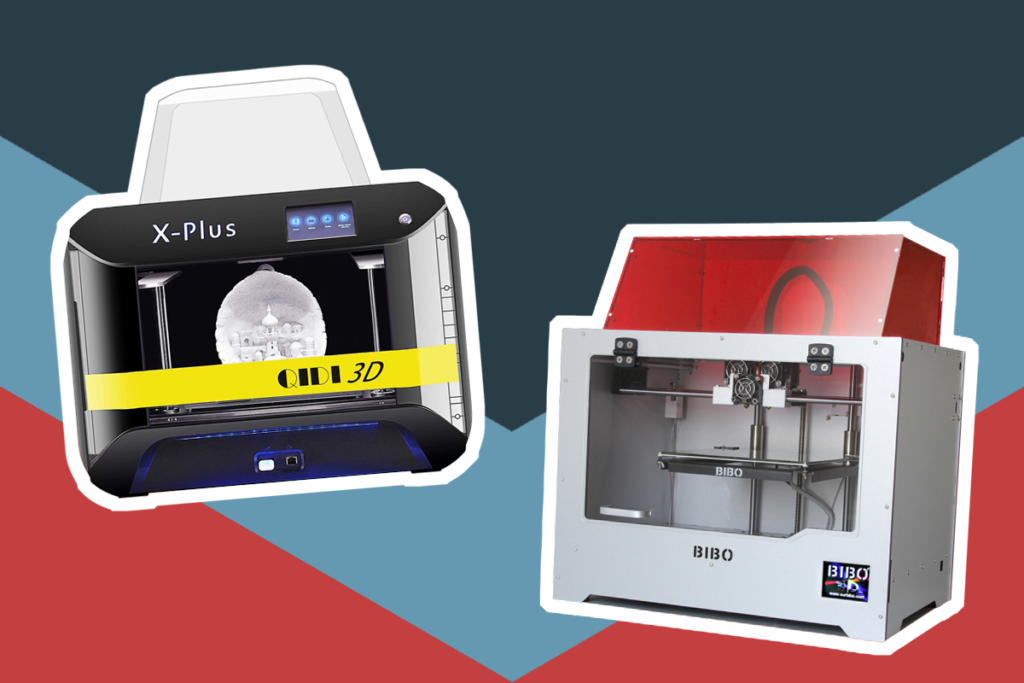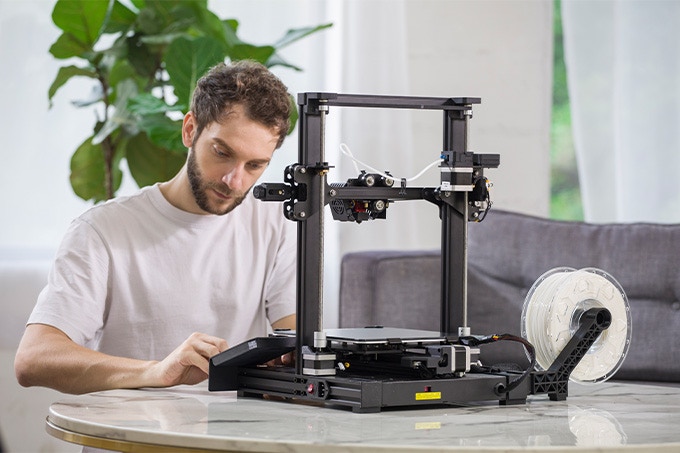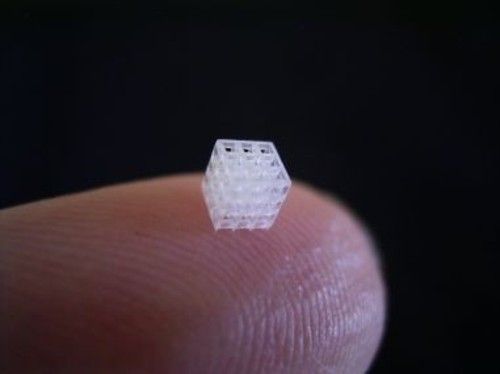

The Creality Ender 3 is a popular 3D printer, especially among beginners, because of its incredible affordability and amazing performance. The printer is compatible with a couple of filaments thanks to its heated print bed and maximum extruder temperature. It works pretty well with the PLA and ABS filaments. Some users have also reported great success with the PETG and TPU filaments.
In this article, we have lined up the best filaments for Ender 3. The products are among the best rated on the market. We considered a few aspects when creating our list of favorites like weight, filament diameter, dimensional accuracy, and available colors. They are the primary determinants of the filament’s quality and performance.
Other features: 7.88″ spool diameter, 2.69″ spool width, 2.20″ spool hub hole diameter
This is one of the most popular filaments among 3D printing beginners. It is a top favorite for many because its poly acidic material is non-toxic. It also has less odor compared to other filaments. The filament comes in a spool weighing 2.20lbs, and it is desiccated and sealed. It requires an extrusion temperature of about 180 to 220 degrees.
The Hatchbox version of the PLA filament is unique because it is a combination of polymers and bioplastics, thus earth-friendly. It boasts very reduced traces of carbon dioxide, and the cardboard box it comes in is recyclable. Moreover, its upgrades are more resilient, robust, and flexible. They also come in different flamboyant colors. All considered, this is the ultimate beginner PLA filament for anyone who cares for the environment.
Other features: 13 available colors, 2.08″ spool hub hole diameter
The CC3D PLA filament is the only thing that comes close to the Hatchbox PLA filament. It’s one of a kind in terms of performance and build. The filament boasts a phenomenal metallic finish that gives it an edge. It comes in a spool that weighs 2.20 pounds and is a top preference for many because of its compatibility with FDM 3D printers.
The CC3D PLA filament has a dimensional accuracy of +/-0.05mm and a recommended temperature of about 195 to 220 degrees. If you are looking for a green-friendly filament that is compatible with FDM printers and can produce stable, unique, and shiny prints, this is your prime pick. Plus, you don’t need any polishing or heated bed.
Other features: 30 available colors
Overture is steadily gaining notoriety with their unique products. This PETG filament is one of their most popular products among 3D printing enthusiasts because of its clog and bubble-free nature. The clog-free patent manufacturing guarantees a stable and smooth printing experience.
The filament stands out because it has less tangle, and it is incredibly easy to use. Its spool has a large diameter which makes feeding it easier. The spool weighs 2.2 pounds. Besides Ender 3, you can use this Overture filament with other common 3D printers like MK3 and Monoprice FlashForge. If you love a good pennyworth and wide compatibility, this is a prime option.
Other features: 32 available colors
Overture made our list twice for all the right reasons. Their PLA filament is just as phenomenal as the PETG one above. It also offers a smooth and stable printing experience with a clog-free patent manufacturing. You would never experience snap and line breaking, common with other filaments, thanks to its full mechanical winding and strict manual examination.
The PLA filament sets itself apart with advanced CCD diameter measuring and a self-adaptive control system that guarantees a dimensional accuracy of +/-0.05mm. It comes in a spool measuring 2.20 pounds. With the 32 color options, the filament is perfect for 3D printers who love variety but like to be consistent with a specific quality.
Other features: 25 available colors, 8” spool diameter, 1.25” spool hub hole diameter
Hatchbox is a respectable and reliable brand when it comes to 3D printing filaments. Their ABS filament is one of the best on the market. It is very durable and comes in 25 different bold and bright colors that can suit any project you have. The filament is simple to use thanks to a relatively wide spool diameter that makes feeding and winding it less of a chore.
This ABS filament is unique because it can withstand sunlight and moisture. This makes it a fantastic option for those who like to print stuff for both outdoor and indoor use. The filament’s temperature recommendation is a bit higher than that of PLA filaments. You must use anything between 210 and 240 degrees for the best adhesion.
Other features: 18 available colors
This TPU 3D printing filament is Amazon’s top choice with over 900 positive reviews for all the good reasons. The brand is popular because anyone can easily work with the filament. Its quality is also reliable. Like all the TPU filaments, this SainSmart prints strong parts that are also flexible.
The filament is a prime option for anyone that prefers high compatibility. You can use it with all the FDM 3D printers on the market that accept 1.75mm filament. Thanks to its exceptional bed adhesion, you would never have trouble printing with the filament. Moreover, it does not warp like most models within its range.
Other features: 22 available colors, 3.5″ inner circle diameter
eSUN is another brand that is quickly gaining popularity. This PLA filament can hold its own when lined up against higher end peers like Hatchbox. It comes in 22 different colors and has a consistent diameter of 1.75mm. The filament offers unmatched robustness, high precision and low shrinkage.
The eSUN is the ultimate filament for 3D printing aficionados who value high purity, low odor and zero toxicity. Like other PLA filaments it is earth friendly. It is compatible with nearly all FDM 3D printers on the market and it barely warps. What’s more, you would never experience print head clogging.
With the information in this guide, you can easily pick the best filament to use with your Ender 3. You will get to know about the different types of filament that work well with the printer and the considerations you should make when choosing a filament that suits your needs.
Here are the filaments that work perfectly with Ender 3:
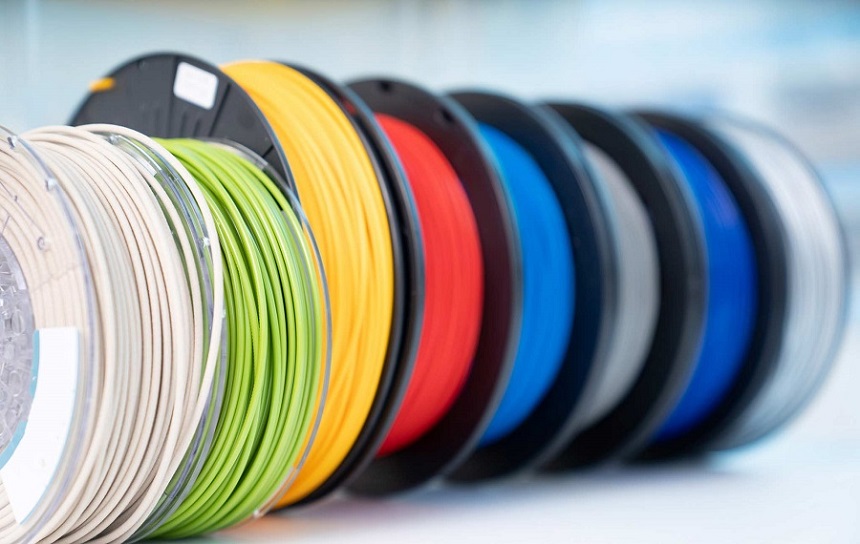
Polylactic Acid is the most popular thermoplastic in the 3D printing world. It is perfect for Ender 3 because it comes in multiple shades with diverse features. PLA sets itself apart from other filaments because it is biodegradable. Other filaments can take years to decompose, but PLA will take less than 6 months.
Another great thing about PLA is that it has a convenient user experience. The filament has low odor, and is less prone to warping and curling.
PLA is a top preference for many because it is a versatile thermoplastic and it can be printed at easily reachable temperatures of 180 degrees to 230 degrees. Plus, it is incredibly affordable yet it offers first-rate dimensional accuracy.
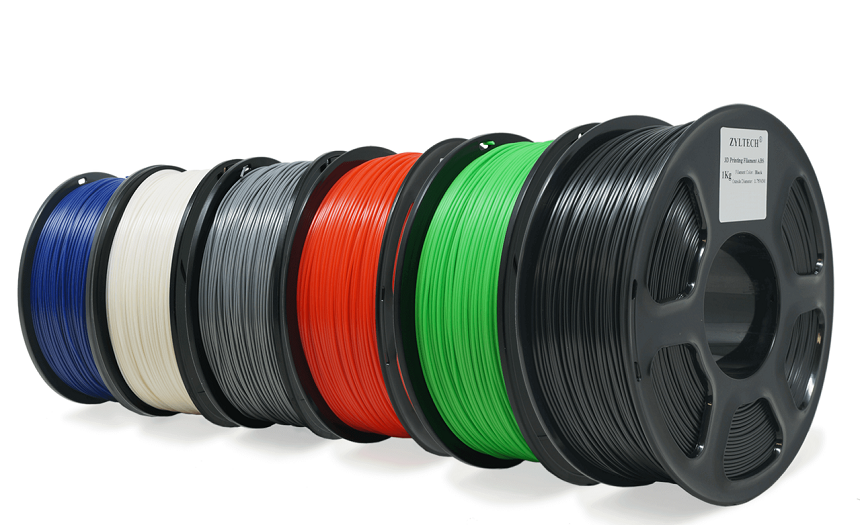
Acrylonitrile Butadiene Styrene is one of the very first filaments that were used with FDM printing. It has managed to remain relevant in the industry for long because of its supreme durability, moderate flexibility and great strength. It also has unmatched heat, mechanical and abrasion resistance. We have one example of this type of filament on our list – a 3D printer filament by HATCHBOX.
ABS is perfectly compatible with Ender 3 and it produces high-quality prints. The only downside is that the filament requires extra attention and precision to achieve great things. Its temperature requirements is a bit on the higher side, ranging from 210 to 250 degrees Celsius. The high temperature makes it prone to warping and curling. What’s more, the high temperatures melt the thermoplastic which releases toxic fumes that can cause discomfort.
The filament is perfect for Ender 3 because the printer has a heated bed plate that can reduce the formation of warped prints. It also comes with a built-in cooling fan that reduces the chance of warping.
All in all, ABS offers unmatched toughness, resistance in different forms, superb durability, and premium quality finish on its print parts.

The only example of PETG filament on our list is OVERTURE PETG filament. PETG Trusted Source What is PETG? (Everything You Need To Know) - TWI Polyethylene terephthalate glycol, known as PETG or PET-G, is a thermoplastic polyester that delivers significant chemical resistance, durability, and formability for manufacturing. www.twi-global.com is Polyethylene Terephthalate with Glycol. It’s like the middle ground between PLA and ABS, and it offers the best of both worlds. PETG is food-safe, incredibly sturdy with a refined surface, and is less prone to warping. You can also recycle it.
PETG is famous for its superb layer adhesion which is behind the formation of high-quality compact prints. The filament’s optimal temperature range is 220 to 250 degrees Celsius. Ender 3 can work pretty well at such high temperatures.
The only trouble you may experience with PETG is stringing. Small strings of plastic may come out of your printer’s extruder. You can avoid this by maintaining the first layer’s height setting of your Ender 3 at 0.32mm.
TPU has a lot more toughness than other filaments and is therefore pretty easy to use as it comes out of the extruder easily. It is also incredibly durable and can withstand compressive tensile forces. Most users prefer it because of its high resistance to abrasion. It is also less prone to warping.
Another thing behind TPU’s fame is that it doesn’t need a heated build plate. The filament works well with Ender 3 as the printer can handle its high temperature requirements (210-230 degrees Celsius). The cooling fan also reduces any prospects of stringing.
The only issue with TPU is that it is hygroscopic in nature. It can absorb moisture in the atmosphere and must be stored properly. If you decide to go for a TPU filament, we strongly recommend the SainSmart flexible 3D printing filament.
For you to make the best buy, you must consider the following purchasing factors:
The weight is basically the amount of material you are getting. Ensure the weight matches the price tag on the filament to get the best value for your money. The standard weight for a spool of filament is 2.2 pounds or 1kg.
There 2 common filament diameter sizes: 1.75mm and 2.85mm. They both come with unique characteristics, but the Ender 3 uses the 1.75mm diameter size. It has a couple of advantages like quick printing, better flexibility, higher extrusion rate, and the ability to retain a higher surface to volume ratio.
The higher the color options a filament model has the better. It means you can work on any project you want with a consistent quality but different colors.
The Creality Ender 3 is a superb 3D printer. You only have to get the perfect filament for it and you end up with the best quality prints. PLA, PTEG, TPU and ABS are the best filaments to use with the printer. Our product line up has the best of each of the filament types that you can get for the best results.
For instance, our best overall choice, the HATCHBOX PLA 3D printer filament is the best PLA filament that money can buy. 3D printing enthusiasts swear by its durability, minimal bending, and the nice and glossy prints it gives. Our premium option, the CC3D PLA 3D printer filament is the best PLA filament you can get for stable prints. It doesn’t require any polishing or a heated bed.
Our third option, OVERTURE PETG filament is the best buy for the money. It is reasonably priced yet fully-featured to offer you the best print quality.
